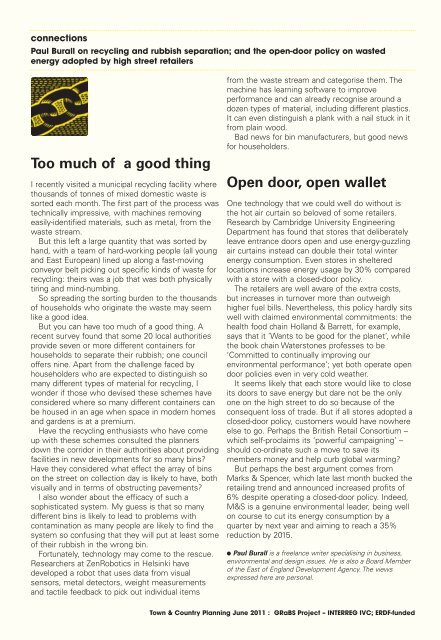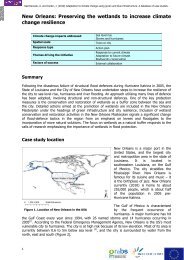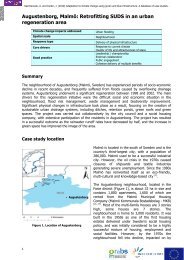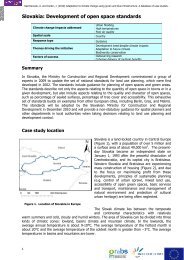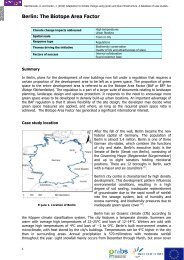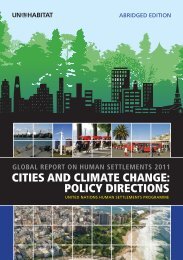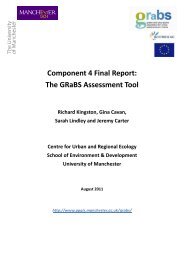Download - GRaBS
Download - GRaBS
Download - GRaBS
Create successful ePaper yourself
Turn your PDF publications into a flip-book with our unique Google optimized e-Paper software.
connections<br />
Paul Burall on recycling and rubbish separation; and the open-door policy on wasted<br />
energy adopted by high street retailers<br />
Too much of a good thing<br />
I recently visited a municipal recycling facility where<br />
thousands of tonnes of mixed domestic waste is<br />
sorted each month. The first part of the process was<br />
technically impressive, with machines removing<br />
easily-identified materials, such as metal, from the<br />
waste stream.<br />
But this left a large quantity that was sorted by<br />
hand, with a team of hard-working people (all young<br />
and East European) lined up along a fast-moving<br />
conveyor belt picking out specific kinds of waste for<br />
recycling: theirs was a job that was both physically<br />
tiring and mind-numbing.<br />
So spreading the sorting burden to the thousands<br />
of households who originate the waste may seem<br />
like a good idea.<br />
But you can have too much of a good thing. A<br />
recent survey found that some 20 local authorities<br />
provide seven or more different containers for<br />
households to separate their rubbish; one council<br />
offers nine. Apart from the challenge faced by<br />
householders who are expected to distinguish so<br />
many different types of material for recycling, I<br />
wonder if those who devised these schemes have<br />
considered where so many different containers can<br />
be housed in an age when space in modern homes<br />
and gardens is at a premium.<br />
Have the recycling enthusiasts who have come<br />
up with these schemes consulted the planners<br />
down the corridor in their authorities about providing<br />
facilities in new developments for so many bins?<br />
Have they considered what effect the array of bins<br />
on the street on collection day is likely to have, both<br />
visually and in terms of obstructing pavements?<br />
I also wonder about the efficacy of such a<br />
sophisticated system. My guess is that so many<br />
different bins is likely to lead to problems with<br />
contamination as many people are likely to find the<br />
system so confusing that they will put at least some<br />
of their rubbish in the wrong bin.<br />
Fortunately, technology may come to the rescue.<br />
Researchers at ZenRobotics in Helsinki have<br />
developed a robot that uses data from visual<br />
sensors, metal detectors, weight measurements<br />
and tactile feedback to pick out individual items<br />
from the waste stream and categorise them. The<br />
machine has learning software to improve<br />
performance and can already recognise around a<br />
dozen types of material, including different plastics.<br />
It can even distinguish a plank with a nail stuck in it<br />
from plain wood.<br />
Bad news for bin manufacturers, but good news<br />
for householders.<br />
Open door, open wallet<br />
One technology that we could well do without is<br />
the hot air curtain so beloved of some retailers.<br />
Research by Cambridge University Engineering<br />
Department has found that stores that deliberately<br />
leave entrance doors open and use energy-guzzling<br />
air curtains instead can double their total winter<br />
energy consumption. Even stores in sheltered<br />
locations increase energy usage by 30% compared<br />
with a store with a closed-door policy.<br />
The retailers are well aware of the extra costs,<br />
but increases in turnover more than outweigh<br />
higher fuel bills. Nevertheless, this policy hardly sits<br />
well with claimed environmental commitments: the<br />
health food chain Holland & Barrett, for example,<br />
says that it ’Wants to be good for the planet’, while<br />
the book chain Waterstones professes to be<br />
‘Committed to continually improving our<br />
environmental performance’; yet both operate open<br />
door policies even in very cold weather.<br />
It seems likely that each store would like to close<br />
its doors to save energy but dare not be the only<br />
one on the high street to do so because of the<br />
consequent loss of trade. But if all stores adopted a<br />
closed-door policy, customers would have nowhere<br />
else to go. Perhaps the British Retail Consortium –<br />
which self-proclaims its ‘powerful campaigning’ –<br />
should co-ordinate such a move to save its<br />
members money and help curb global warming?<br />
But perhaps the best argument comes from<br />
Marks & Spencer, which late last month bucked the<br />
retailing trend and announced increased profits of<br />
6% despite operating a closed-door policy. Indeed,<br />
M&S is a genuine environmental leader, being well<br />
on course to cut its energy consumption by a<br />
quarter by next year and aiming to reach a 35%<br />
reduction by 2015.<br />
● Paul Burall is a freelance writer specialising in business,<br />
environmental and design issues. He is also a Board Member<br />
of the East of England Development Agency. The views<br />
expressed here are personal.<br />
Town & Country Planning June 2011 : <strong>GRaBS</strong> Project – INTERREG IVC; ERDF-funded


